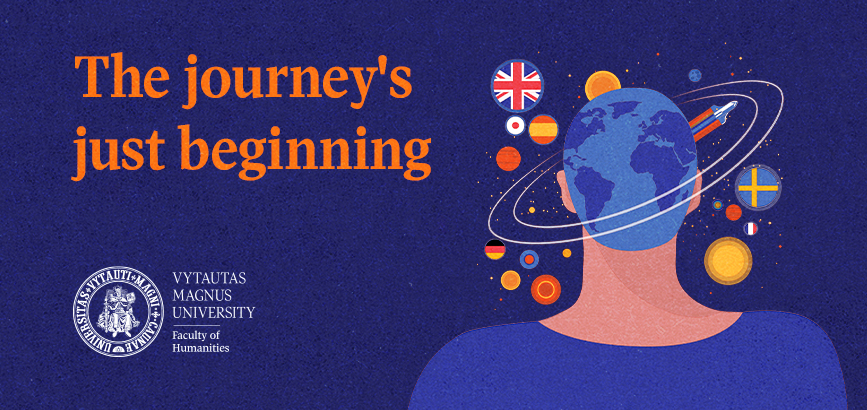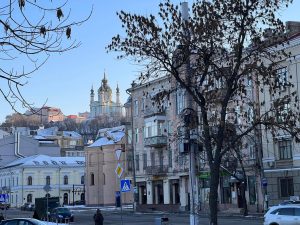Project “16 Days of Gratitude”: day 12
Day 12. Podol during the time of the Grand Duchy of Lithuania. I would like to invite you to the National Museum of the History of Ukraine, but because of the war, its expositions are hidden. Therefore, I propose today to take a walk in Podol: it has particular relations with the Lithuanian times in the history of Kyiv, and is very clearly visible from the mountain on which the Lithuanian castle once stood. The most convenient road to the castle once led from Podol. By the way, back in the 13th century, the upper city, the legendary Kyiv, was heavily destroyed as a result of the raids of the Mongol-Tatars and lay in ruins, and all life then concentrated at the foot of the Kyiv mountains, in Podol. For now, let us go down the steep Andreevsky stairs… The Lithuanian period in the history of Kyiv covers the period from the middle of the 14th till the middle of the 17th century. After the victory of Prince Olgerd at Blue Waters in 1362, Kyiv, Kyiv region, Chernihiv region and a part of Polissya (a rather significant territory) became a part of the Grand Duchy of Lithuania. Olgerd’s son Vladimir who ruled in Kyiv built a majestic castle. Under his rule, Kyiv economically grows stronger, develops trade and mints its own coin. In 1397-1401, the ruler was Ivan Olshansky, and after him Kyiv belonged to Vitovt, who strengthened the defense of the city and successfully fought against the Golden Horde. After the death of Vitovt (1430), Svidrigailo Olgerdovich owned Kyiv, however, his defeat at Vilkomir in 1436, led to the liquidation of the Grand Duchy of Moscow as part of the powerful state of the Grand Duchy of Lithuania, as well as the Kyiv Principality. In 1440, Olelko Vladimirovich (1440–1455) from the Gediminovich dynasty succeeded in restoring the principality of Kyiv, but this principality was short-lived: after the reign of Semyon Olelkovich (1455–1470) it ceased to exist. Semyon Olelkovich was very engaged in the restoration of the destroyed Kyiv, he restored both St. Sophia of Kyiv and the Assumption Cathedral we mentioned in the Kyiv-Pechersk Lavra, where Konstantin Ostrozhsky was later buried. After the death of Prince Semyon Olelkovich in 1471, the Grand Duke of Lithuania and King of Poland Casimir IV liquidated the principality of Kyiv, turning it into a voivodeship. The castle housed a permanent Lithuanian garrison. In 1482, Kyiv was captured and destroyed by the troops of the Crimean Tatar Khan Mengli Giray at the request of the Muscovites (since then they have been haunting Ukraine). Most of the Old Kyiv churches were destroyed. Sophia Cathedral was plundered, and this happened more than once. At the beginning of the 16th century, Kyiv was at the center of the Muscovite-Lithuanian wars. In 1569, on the basis of the Union of Lublin, Kyiv and the Kyiv region was passed to the Polish Crown. In 1559-1608. Kyiv governor was Konstantin Vasily Ostrozhsky, one of the richest and most influential magnates of the Grand Duchy of Lithuania in the Commonwealth. However, he had an unfavorable attitude towards Kyiv, ignoring the orders of the Seim to strengthen the Kyiv castle. This was probably due to the independence of the Kyiv citizens, who used the Magdeburg right. But already in 1649, Kyiv was captured by the Cossack troops of Bohdan Khmelnitsky and became the center of the Cossack Kyiv regiment. In 1651, Kyiv was captured by the troops of the Lithuanian hetman Janusz Radziwill, who burned Podol. However, the Cossacks very quickly regained Kyiv and that was the end of the Lithuanian period in it.
And now, we are already in Podol. In the days of February 2023, it is a little frosty and the sun is already setting, but let us imagine how it all was. So, Podol of that time is a separate city. In addition, unlike the Upper Town, Podol had Magdeburg rights, granted in 1498, and therefore it was similar to other cities with the same status and had a castle, a town hall in the center (two-story wooden building), a market square, trading colonies, a suburb, as well as a port, numerous merchant warehouses and the main cathedral. The main Podolsky streets connected the Rynok, the entrance gates, and the churches. The area around the Market was considered prestigious for living. The urban elite lived here. Residential buildings were wooden, mostly one-story. The main building unit was the yard, which consisted of 1–3 residential and various outbuildings, the number of which depended on the wealth level of the owners. This was a kind of “megacity” of that time (if we take into account the Upper City and all the possessions of the voivode and officials, that is, the entire urban agglomeration), but it is chaotically built. The main cathedral church of Podol, in the Lithuanian-Polish era was the Church of the Assumption of the Mother of God. The temple was erected in 1135 and reconstructed at the expense of the townspeople in the 15th century. It was even destroyed twice during the Lithuanian era by the Tatars, and each time it was rebuilt by the the townspeople. The temple was finally destroyed by the Bolsheviks in 1935, and it was rebuilt in the late 1990s. The church operated as a city hospital and a school. In 1632, 11 churches also operated on Podol, 8 of which stood on the territory subordinate to the magistrate. The ancient Podol was surrounded by ramparts, now preserved in the names of the streets of the Upper and Lower ramparts. And also on Podol, in the Lithuanian times, there was a very old Nikolaevsky Dominican monastery with the church of St. Nicholas. It was destroyed several times, rebuilt, changed, and like the Peter and Paul Orthodox Church in the 1930s, destroyed by the Bolsheviks. In the first half of the 17th century, a Bernardine monastery and a residence of the Jesuits were founded near Andreevskaya Gora, and not far from the modern Zhitny Market there was a Catholic cathedral church, but they have not survived to the present.
Handicraft and trade were also concentrated here in Podol; handicraft workshops operated. They were engaged in everything in the world, and in addition, they caught fish, hunted and grinded grain, because they were also engaged in agriculture. Kyiv lay at the crossroads of important trade routes that linked Western and Eastern Europe, the Balkans, the Middle East, as well as had a long tradition of participating in international trade, which allowed it to restore a major center of international trade, lost due to the Horde invasion. In Kyiv, there was one of the main customs houses of the Grand Duchy of Lithuania, which occupied a leading position in terms of the volume of customs duties in the state. They also said that here in Podol, the most delicious bread in the entire principality was sold – Middle Dnieper, Volyn and Podolsky, also the saltiest salt from Kolomyia, the best furs and the fastest horses, and from the eastern shops it smelled of spices, wine, and leather goods. Kyiv bows and arrows were valued. And how Podol came to life, when fairs were held twice a year, then honey and beer were pouring like a river. Later (1548), a whole Gostiny Dvor was built for international trade. The citizens of that time did not forget about science either and continued their book-writing, however, the literature of that time was mainly liturgical. Reading and writing were then taught at churches and monasteries, and later in 1615, the citizens of Kyiv, the gentry, and the clergy organized a brotherhood and a school under it. The Kyiv fraternal school consisted of five classes. Later, on its basis, in 1632, the “Mohyla” collegium was founded, which was an educational institution of the highest type and still exists till these days. However, no matter how much I tell you, nothing has remained since then. Podol was destroyed by the great fire of 1811, it was rebuilt, and then the Bolsheviks destroyed it once again, and now Podol is once again changing alongside modernity.
P.S. In Podol, we saw a stand dedicated to the modern Ukrainian military units that are fighting today and they are dedicated to the Prince Vitovt and the Prince Kostantin Ostrozhsky. That is how Lithuania is at every step in Kyiv.
Dr. Ruslana Martseniuk
Photos by dr. Ruslana Martseniuk





















